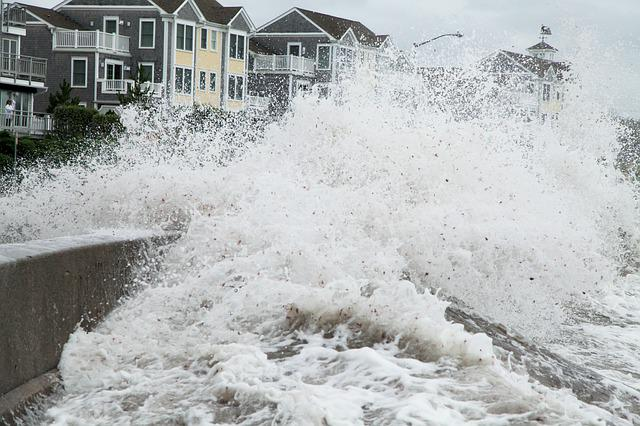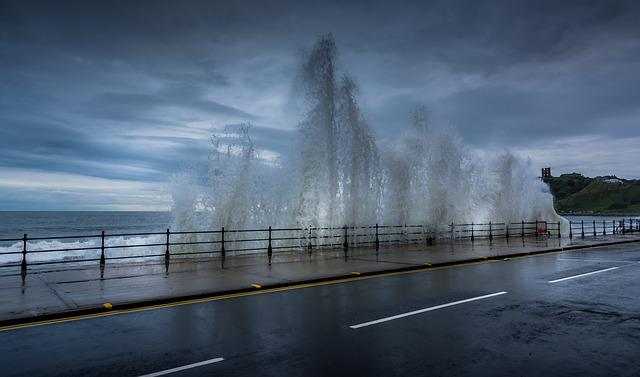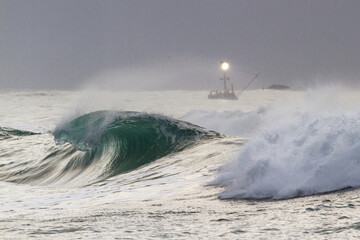How long is high tide?
The length of high tide depends on the location and the time of year. In general, high tide occurs somewhere between 12-25 hours after low tide depending on where you’re located.
For example, if you live on the East Coast or in Hawaii, then the neap tide will occur around 6-8 hours after low tide. On the other hand, if you live on the West Coast or Alaska, then it will be about 8-10 hours after low tide. Additionally, at certain times of the year like during a full moon, they can last for several days because all of the water from the tidal wave is being pushed into one area at once.
High tide refers to the point during the day when the water level is at its highest. This high point varies depending on several factors, such as the gravitational forces exerted by the moon, sunlight, and ambient wind conditions.
In general, rising tide typically occurs between 12 and 2 PM, although this can vary based on location and environmental conditions. Some areas experience high tides that are higher or lower than average, depending on their proximity to large bodies of water or other factors affecting tidal patterns.
Regardless of where you live or what time of year it is, Spring tides are an important marker to be aware of when planning your daily activities. Whether you’re going out to sea on a fishing trip and finding the best fishing tide times or simply walking along a waterfront, high tides can have a significant impact on your safety and enjoyment so as the low tides.
So remember to keep an eye on the high and low tides schedule wherever you are to enjoy some neap tides.

However, this phenomenon doesn’t happen very often as it requires just the right conditions. All in all, the length of the high tide can vary depending on where you are and what time of year it is.
When is high tide at my location?
The best way to find out when the tide rises is at your location is to check the tide chart for your area. Tide charts are readily available online and can give you an accurate prediction of when tidal waves rise.
You can also check the local news or weather forecast for information on high tide times. If you live in an area with a lot of coastal area activity, then high tide and low times are usually announced on the radio or television as well.
How many low tides in a day
There are typically two low tides in a day depending on tidal cycles, although there can be more or less depending on the location and time of year. The first low tide typically occurs around 6-8 hours after the tidal ranges, while the second low tide is typically 12-24 hours after high tide. Some areas may experience only one low tide per day, while others may experience three or more.

There are usually two high tides in a day, although there can be more in some locations. King tides occur when the level of the sea rises above the level of the shore, and this is caused by the gravitational pull of the moon and sun.
The moon has a bigger effect on high tide than the sun, but both influences can be observed. Sun and moon both affect when low tides occur or high tides occur. The pulling force exerted by the moon creates a bulge in the water closest to it, and this high tidal cycle then travels around the globe in the same direction.
The sun also exerts a gravitational pull, but it is weaker than that of the moon. As a result, tide waves are usually highest when the moon is full or new. However, king tides can also be affected by other factors such as weather conditions and wind in the same direction.
What causes tides?
The tides are caused by the gravitational pull of the moon and the sun on the earth’s oceans. The moon’s gravity is stronger than when the sun rises, so it exerts more influence on the incoming tide. This means that during a full and new moon, the high tide is especially high, and the low tide is especially low thus producing tidal currents.
Other factors influence the gravitational pull and then the ride rises, such as weather patterns and underwater topography. For example, a storm in the Pacific Ocean can cause large waves that push water up towards the shoreline, which causes higher tides. Additionally, a beach may have a more pronounced change in water levels if there are cliffs or rock formations along the shore.
Several factors contribute to the rise and fall of the highest tide. The most obvious cause is the movement of the moon since the gravitational pull of this large body creates a bulge in the ocean on the side facing it.
This phenomenon is known as gravitational tide-generating force or GTF. Additionally, there is a high tide on the opposite side of the planet from where the moon currently is, which occurs due to centrifugal forces created by rotation.
Other factors that influence high tides include wind patterns, temperature differences between oceans and landmasses, and local bathymetric features such as shoals or river mouths. Ultimately, high tides occur as a product of complex interactions between various natural forces that are constantly changing in response to external conditions.
Types of tides?
There are two main types of tides: diurnal and semidiurnal. Diurnal tides occur when the Earth’s daily rotation around its axis causes the water to rise and fall once each day. Semidiurnal tides occur when the Moon’s gravitational pull causes two high tides and two low tides each day.
Tides are influenced by many factors, including the Moon’s and Sun’s gravities, local geography (such as bays and estuaries), earth’s rotation, and wind. Generally speaking, high tide happens when the water is being pulled towards the shore by the Moon’s gravity.
How many hours occur between high and low tide?
High tide typically occurs every 6-8 hours, depending on a variety of factors such as the Moon’s and Sun’s gravities, local geography, and wind. The time between high tides is typically less than 12 hours.
Tell me the cause of the tide?
It is difficult to believe that tides are very long waves created from the gravitational pressure that the Moon exerts on the ocean. The seafloor rises near the shore at the crest of the wave and falls when it is moved towards the ocean. Unlike normal shorelines, the waves of the ocean are very small and are hence called ‘long-periodic waves’. The moon is the primary generator of our tides. Although the Moon’s Sun is bigger, and hence produces greater gravity, it is far away from Earth and has fewer effects on seas than the Moon’s.
Tell me the difference between Spring Tides and Neap Tides?
While high and low tides vary predictably, some gravitational of the sun and moon combine to form tides with extreme high and low known as spring tides. Why does it occur? Often the forces clash with one another, leading into softer waters called “no-waking tides”. There is a spring tide and a nap tide every month and alternately for two weeks. So, in January of this year at Rockland ME… It is also possible that lunar orbits are more irregular than Earth’s orbit around it.
Why is there no tide in the Caribbean?
Many of the Caribbean Islands are islands at sea with no topographic change of distribution. The channels between islands are often flooded due to the higher currents in the waters, this means that a lot of water is required to move between the two islands to maintain the normal elevation.
How long does high tide last?
Slack tides can last between 15 and 30 minutes. During the tidal phase, the water stops flowing and is referred to in some terms as “slacked water”. The tide reversed direction and turned. Slack water generally occurs near high water and lower water, but in some cases, the slack tides are significantly different from high water or low water.
Conclusion
In summary, high tide can last for a variety of periods depending on the location, weather conditions, and other factors. The average high tide lasts for about 6 hours. However, some high tides can last for 12 hours or more.
If you are interested in finding out the specific high tide times for your location, you can consult a local tide table. This information will help you to plan out your activities around the beach and ensure that you are safely away from the water during high tide. We have also written about how long do high tides last right here





